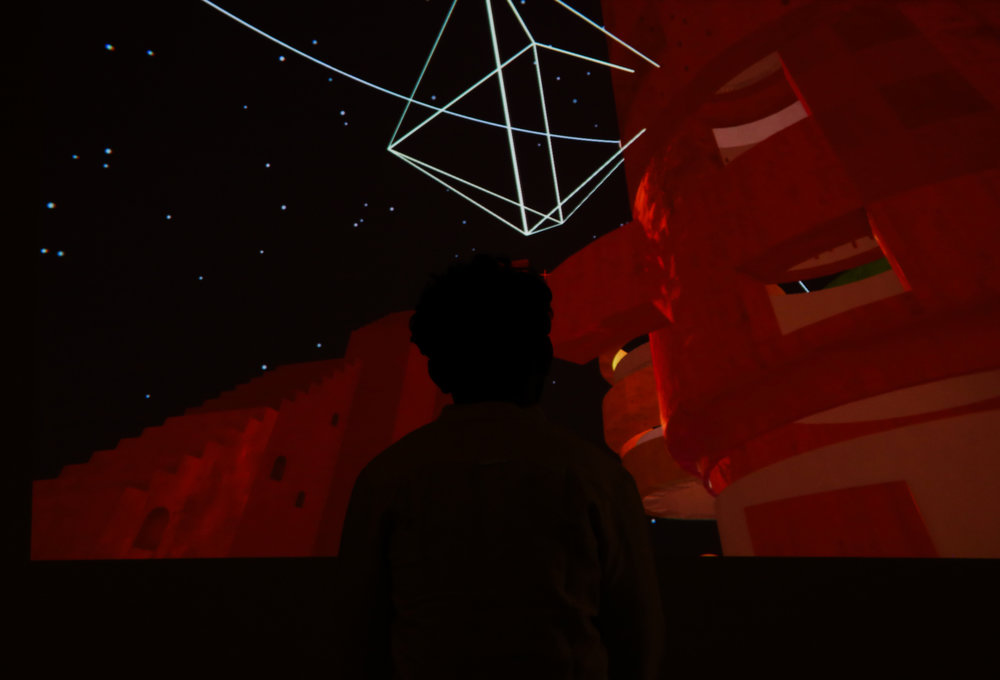
‘Both space and time are produced by us’ – an exhibition in Jaipur considers the work of Charles Correa through installations that propose new ways of living

Clove: What does the title “When is Space” mean?
Rupali Gupte: As a theoretical position, we believe that space is a produced idea, not a given one. Space happens in the minds of people, through specific acts they undertake; space happens when someone creates or imagines boundaries in a variety of ways; space happens when someone claims a certain place; space happens through drawing or through its representation. So the question we were asking was, “what does it take for space to happen?” Which was then shortened to, “when does space happen?”. Which was further shortened to, “when is space?”

As humans, we structure our lives around two powerful concepts we have created for ourselves: the concepts of space and time. It is important to note that both are produced by us. In many ways, the title is also an attempt to tie space to time by giving it a temporal interrogation – to also say that space happens in time. Our friends from the the group of artists Raqs Media Collective – whose work in the exhibition points to how a mind would think about space – created a performance for the opening of the exhibition and answered our question “When is Space?” by asking us “Where is time?” – to say that time also happens in space.
Discussions on contemporary architecture in India have largely been through debates about production of architecture, where architecture and architects are seen as handmaidens of patronage and capital. We feel that first questions on space are required to be asked regarding architecture – and hence this exhibition is about asking those first questions: how do contemporary architects and artists think about and make space?

Floating Roof by The Urban Project
Clove: How did the exhibition come about?
RG: We were invited by the Jawahar Kala Kendra, an arts centre in Jaipur, to develop an exhibition around the ideas and works of the influential Indian architect Charles Correa, who had designed the building. When we started researching the JKK and its architecture, we found that Correa was tremendously influenced by the works of Sawai Jai Singh, the astronomer and founding king of Jaipur.
We [Gupte and co-curator Prasad Shetty] have been writing, teaching and researching in the field of contemporary architecture for a long time now. When we went deep into the works of Correa and Jai Singh, we found that the concerns and methods of contemporary architects were very close to the concerns and methods of Correa and Jai Singh – all of them were interested in a mathematical logic of space, in developing new typologies for life and in developing architecture for the masses. Because of these similarities, we decided to invite contemporary practitioners of space to respond to the ideas of Correa and Jai Singh, which we formulated as provocations.

Pavilion for Incremental Form by Anthill Design
We were interested in compiling new ways of making space, which the practitioners of space were doing. So the exhibition is about practices of space-making and not about individual works. Most people were invited because they were persistent with some questions, which they were following over many years and many projects. The exhibition is expected to provide new and alternative ways of thinking about everyday spaces.
Drawing in Space by Parul Gupta
Clove: What were some of the works on display?
RG: Both architects and artists were involved in the exhibition, with every work annotated by a quote from Correa and one from one of five historians of Jaipur. There were those who have made large-scale interventions that play with the idea of boundaries – which are so critical for human beings to think about space. There were others who asked basic questions about the elemental nature of space. Some developed typologies for newer ways of living. Others asked questions about imagining, conceptualising and drawing. Finally, there were those who picked up very critical issues about public spaces and urban space.
When is Space? – which features work by Clove 01 contributor Randhir Singh – ended on 21 April 2018. Visit the website for a walk-through of the exhibition
Sign up to our newsletter to receive occasional updates about Clove, and buy issue 01 of the magazine below, which contains a specially commissioned essay about the history, legacy and future of modernist architecture in Bangladesh, with accompanying photographs by Randhir Singh, who appears in the exhibition above






